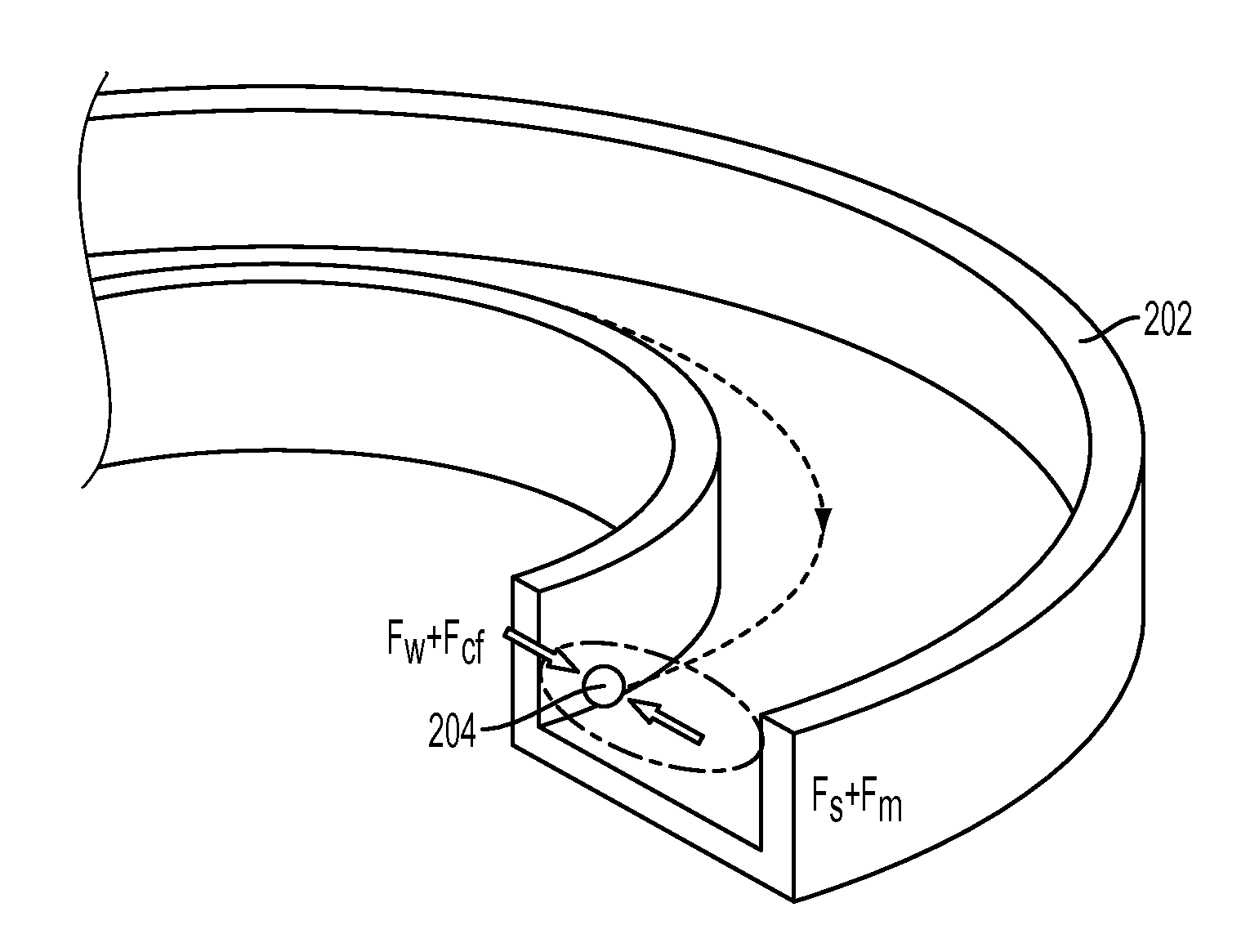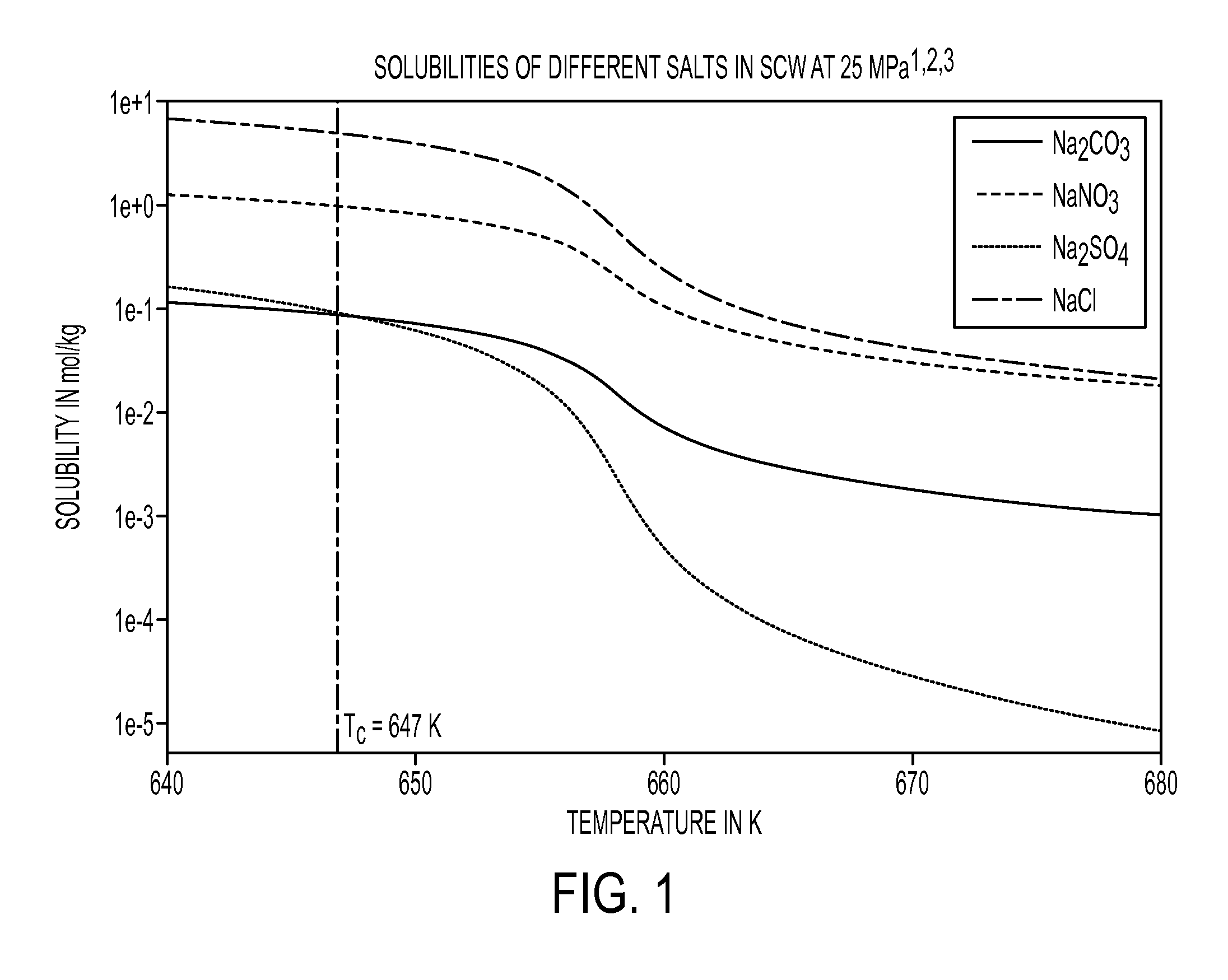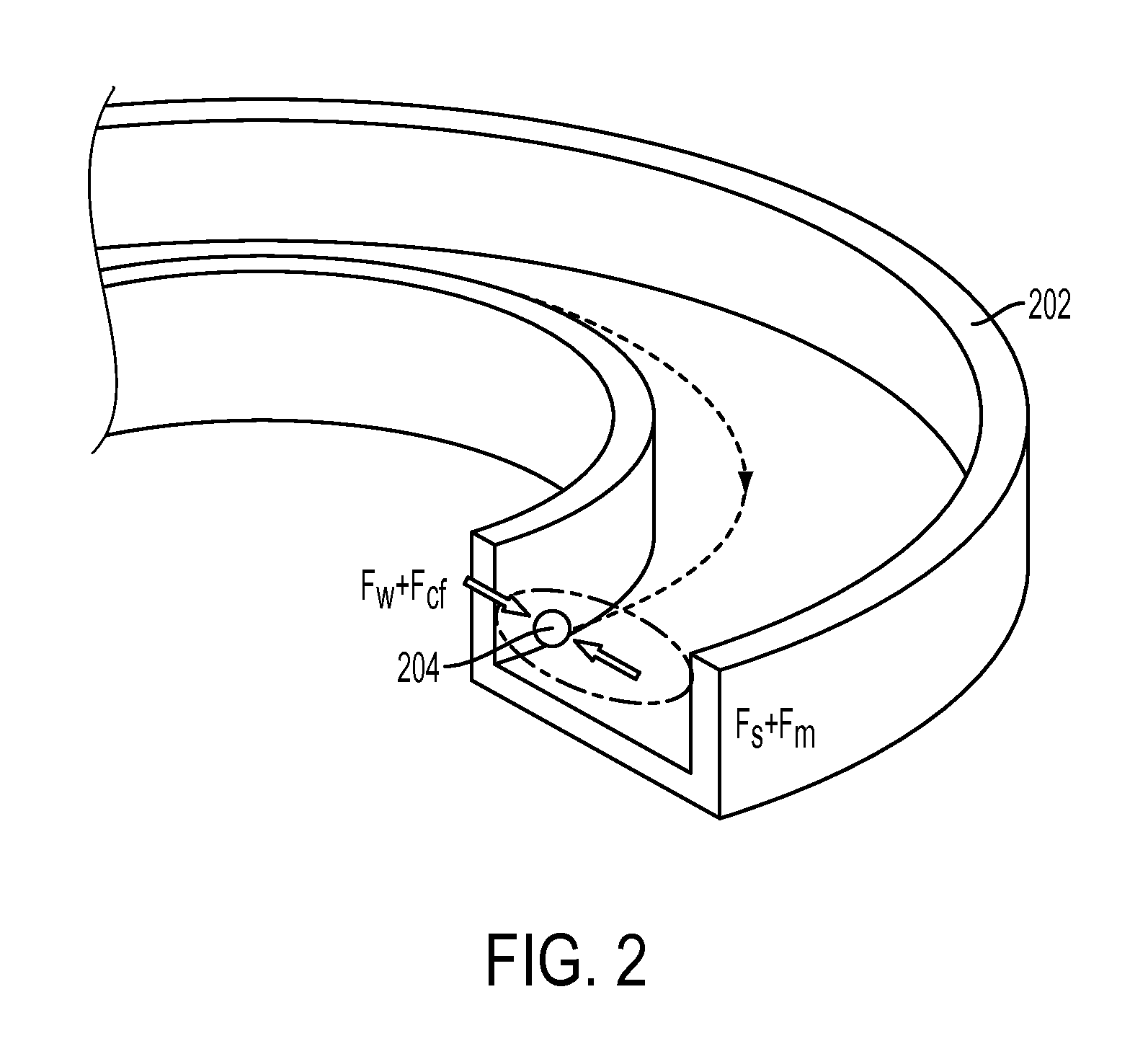Desalination using supercritical water and spiral separation
a technology of spiral separation and supercritical water, which is applied in the direction of separation process, filtration separation, moving filter element filter, etc., can solve the problems of high energy cost of flash distillation, rapid drop in effluent recovery efficiency, and requirement of frequent back flush of reverse osmosis, etc., and achieve the effect of reducing the efficiency of desalination
- Summary
- Abstract
- Description
- Claims
- Application Information
AI Technical Summary
Benefits of technology
Problems solved by technology
Method used
Image
Examples
Embodiment Construction
[0022]The exemplary embodiments use a spiral separator configured to exploit the properties of supercritical water for water desalination. As will be discussed below, by first converting source water to supercritical water, particles disposed therein (e.g., salt) can be more easily separated using a spiral separator.
[0023]Supercritical water is achieved at a critical temperature Tc=647° K or greater and a critical pressure pc=22.1 MPa or greater. Compared to water at ambient conditions, supercritical water exhibits properties that more readily facilitate desalination. Among these properties, supercritical water has a viscosity of approximately 1 / 100 that of normal water. The two orders of magnitude reduction allows fluid to move much more rapidly through a device, whereby the flow rates through the device for a given pressure gradient are approximately 100 times higher. This advantageously allows the device to be reduced in size. Another property of supercritical water, although cou...
PUM
| Property | Measurement | Unit |
|---|---|---|
| pressure | aaaaa | aaaaa |
| critical pressure pc | aaaaa | aaaaa |
| critical pressure | aaaaa | aaaaa |
Abstract
Description
Claims
Application Information
 Login to View More
Login to View More - R&D
- Intellectual Property
- Life Sciences
- Materials
- Tech Scout
- Unparalleled Data Quality
- Higher Quality Content
- 60% Fewer Hallucinations
Browse by: Latest US Patents, China's latest patents, Technical Efficacy Thesaurus, Application Domain, Technology Topic, Popular Technical Reports.
© 2025 PatSnap. All rights reserved.Legal|Privacy policy|Modern Slavery Act Transparency Statement|Sitemap|About US| Contact US: help@patsnap.com



